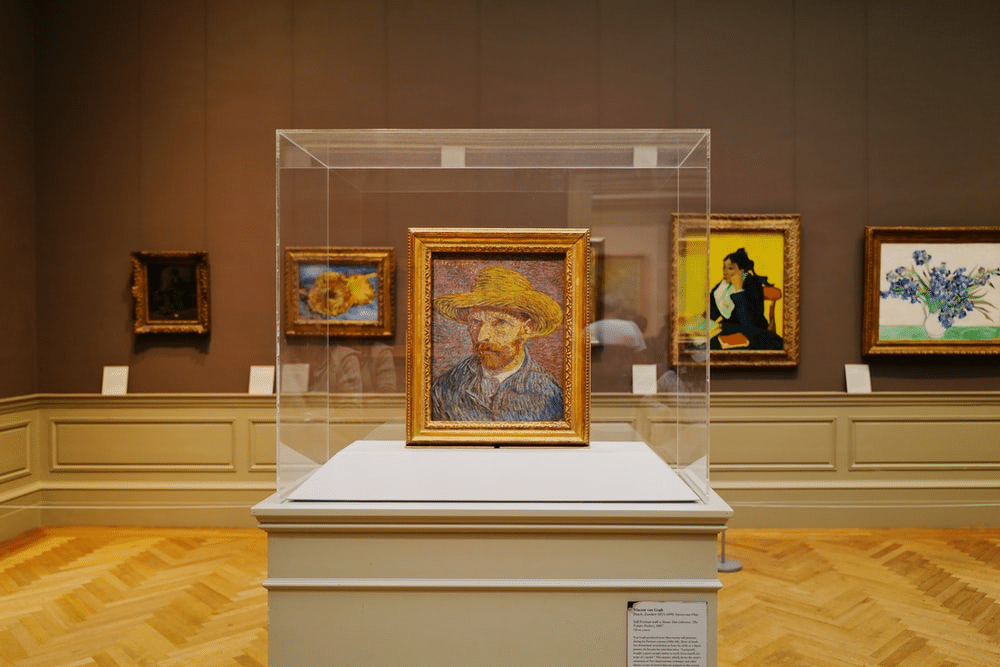
As a parent of a lower school student between the ages of 11 and 13, you may feel compelled to put their academic enrichment first. More often than not, parents have a razor-sharp focus on helping their children achieve high levels of academic performance.
If you share the same focus, you’re on the right track. However, solely focusing on STEM (science, technology, engineering, and math) can adversely affect your child’s schooling experience. As their creative expression is thwarted or overlooked, their creative avenues can get blocked over time.
Exclusively focusing on STEM can take its toll on your child, especially when they’re undergoing an active learning phase. Children between the ages of 9 and 15 are capable of absorbing and retaining knowledge more effectively. Their creative interests are still developing during this age. They’re curious to learn new things, take up interesting hobbies, explore their passions, and express themselves creatively. If their schooling experience is restricted to STEM subjects, students may struggle to explore their creative penchants.
At Cambridge Home School, we focus on STEAM (science, technology, engineering, art, and math) instead. Students of all ages, especially those between the ages of 11 and 13, are provided art and design lessons to help with their creative and artistic expression.
By making art and design a part of their curriculum, we ensure that children feel comfortable exploring different art forms. In this blog, we’ll dive deeper into the importance of art and design classes for lower school students. Continue reading.
1. Creative Exploration

At Cambridge Home School, our art and design classes help ignite the spark of creative exploration in young students. Our MA/PhD qualified subject specialist teachers are adept at helping children develop an interest in creative skills like drawing, painting, mixed media, and 3D design/sculpture, among others.
Exploring these activities is extremely important for pre-teens. Children between the ages of 11 and 13 have creative instincts that should be actively and thoroughly explored. Parents who fail to provide a creative outlet to their children do a lot more damage than they may think. When children don’t get the opportunity to express themselves creatively, they become reserved, withdrawn, and reticent, despite having a natural desire to do so.
In most cases, these children are instead burdened with an excessively and exclusively strong focus on STEM. Their creative thirst isn’t quenched. Instead, they’re pushed to develop a stronger appetite for “hard” sciences, i.e., math, physics, chemistry, etc. Children perceive creative exploration and expressive as negative activities. As a result, they subconsciously begin to further distance themselves from creative avenues.
As these children enter their teenage years, they may feel hesitant and nervous when they’re asked to partake in a creative activity. Since they were unable to explore such activities growing up, they don’t feel comfortable indulging in them at a later stage in their schooling experience. Over time, a lack of creative expression can affect a child’s personal development and academic growth.
By allowing children to artistically express themselves from a young age, we increase their confidence in exploring “soft” sciences. In addition, children grow up feeling uninhibited and free to exercise their creative passions and interests as they deem fit. As students receive art and design lessons, they become more expressive, open, curious, ebullient, and high-spirited. They unhesitatingly explore new interests and activities, and confidently take up more space.
Recommended Read: Art & Design Classes for Lower School Students at Cambridge Home School
2. Social Skills

At Cambridge Home School, our art and design classes are taught to students in groups of 8 to 10. By keeping the classroom size small, we help children attentively and intently engage with each other as they express themselves creatively. Children are able to watch their peers enjoy the same activities and bond with them.
Our students also actively bounce ideas off of each other. “Angela, are you using the matte or glossy colour palette for the foreground?” is a statement parents would probably hear their child utter as they exuberantly paint away with their peers. By working together on art and design projects, children develop strong social skills.
Our teachers are focused on further strengthening these social bonds. They keep the discussion engaging, interactive, and stimulating at all times. Children are encouraged to communicate with their peers on projects and express their ideas without hesitation.
By creating an enriching and supportive online learning environment, our teachers help students express themselves creatively without feeling inhibited in the least. As they excitedly engage with their peers during live lessons, students soak up inspiration, learn new art and design tricks, and thoroughly enjoy themselves on the whole.
3. Art and Design History

Instead of simply focusing on hands-on learning, we also value the importance of teaching theory. Our teachers build a strong foundation by teaching students art and design history. Lower school students are taught about pioneering artists, diverse cultures, key design elements, and variegated artistic styles.
Prior to starting their activity for the day, students are able to understand its significance. This goes a long way in helping them get a good grasp of the context behind their activity.
As students progress to upper school and sixth form, they’re equipped with the foundational art and design insights needed to explore advanced creative activities. They are assiduously kept on track through and through.
As a parent, you don’t have to worry about your child struggling during their upcoming academic years because of inadequate art and design knowledge. Our teachers cover everything from theoretical insights to practical creative expression during and after class.
Recommended Read: 3 Useful Soft Skills Students Develop Through Online Schooling
4. The Legitimisation of Art and Design

Today, many parents perceive art and design as a non-academic subject. Unfortunately, this is a common misconception that is frequently acted upon by parents. By steering their children away from art and design lessons, parents inadvertently stifle their creative growth.
Unable to explore new, unique, and exciting creative avenues, children develop a sense of discontentment that they may not even be aware of. This is because the suppression of art and design exploration in children is very implicit. Parents don’t outwardly tell their pre-teens to “avoid painting” or “put the sketchbook away.” Instead, their disapproval is covertly implied, directly enough that children pick up on it.
By teaching art and design lessons in addition to math, biology, chemistry, and physics (among other subjects), we legitimise creative subjects in each student’s eyes. We help them understand that exploring their creative passions is a positive thing as opposed to something they should feel ashamed of.
Our teachers celebrate their creative accomplishments and continually affirm them. This helps pre-teens feel more comfortable about expressing themselves creatively. Whether they enjoy painting, drawing, sculpturing, or designing, they’re encouraged to explore these activities without guilt.
At Cambridge Home School, we’ve often had parents ask why this guilt is common among children in the first place. These parents are largely supportive of their children’s art and design education, hence the puzzlement.
In actuality, many parents encourage their children to step away from artistic activities once they get closer to becoming a teenager. While young children are encouraged to enjoy these activities, older children are told that they’re “too old to still be painting or caring about art and design.” Parents fear that their children may take a liking to art and design, and pay less attention to “hard” sciences.
At Cambridge Home School, we maintain an excellent balance. We don’t prioritise one subject over the other in lower school. This may be encouraged as older students prepare for their IGCSEs or A Levels and need to pay more attention to specific subjects they’re struggling with.
However, the same approach isn’t used for students between the ages of 11 and 13. Instead, they get a chance to equally focus on the subjects that are being taught. Of course, your child will naturally develop a stronger interest in subjects that they personally prefer. However, our teachers don’t form children’s preferences. They provide enriching lessons and help children develop their own penchants accordingly. Ultimately, your child will pursue subjects that pique their interest the most.
By teaching art and design classes, we don’t take your child’s attention away from STEM. Instead, we provide a holistic, balanced education to maximise their exposure to diverse subjects.
Recommended Read: How Long Does It Take Younger Students to Adjust to Online School?
5. Improved Engagement and Focus

While our teachers use advanced strategies to maximise student engagement and focus during each class, they have noticed that art and design classes help increase student attentiveness the most. This is largely because students enjoy these particular classes a lot more.
Art and design lessons serve as a great refresher after a rigorous math, physics, geography, chemistry, or biology class. Student engagement is exponentially higher. Pre-teens are also able to focus more during art and design classes. Our teachers encourage students to retain high engagement and focus levels during the remaining classes as well.
By rewarding students for good performance and setting an expectation for other classes, teachers help students improve their concentration across the board. This strategy also helps inculcate the importance of responsibility in students. They understand that their subjects carry equal importance. If they’re paying more attention during one class, they’re expected to maintain similar levels of attention in other classes as well.
By creating a check-and-balance system, Cambridge Home School’s teachers help students understand what’s expected of them, and meet that standard. This approach goes a long way in improving each student’s academic performance.
6. Self-Expression

Strong self-expression is extremely important among students. In fact, it’s a valuable trait to possess at any age. As a student, your child should feel comfortable coming into their own. They should find joy in expressing themselves through art.
This can be done in many ways. Perhaps it’s the way your child expresses their emotions through poetry. Or maybe it’s the way they channel their creativity through their clothing. Ultimately, your child should feel supported, safe, empowered, and affirmed enough to use self-expression as a tool in their daily life.
Art and design classes play a pivotal role in helping pre-teens reap the benefits of open, loud, and proud self-expression. As a result, their mental health significantly improves. Students don’t feel suppressed in any way. They’re able to explore their creative interests and passions with confidence.
Self-expression will benefit your child throughout their schooling life and professional career. As they attend school, they’ll derive a strong sense of contentment from participating in creative activities or artistically expressing themselves. If students are restricted from doing so, their mental health can suffer. As a result, their academic performance is often affected.
We strongly urge parents to undo the damage by giving their children the opportunity to develop their own creative interests. In fact, encourage your child to explore their artistic passions outside of class as well. You can plan a creative activity with your child or set up a group activity that they can enjoy with their friends.
Either way, supporting your child’s creative journey will enrich their academic experience, personal growth, and social development.
Recommended Read: 8 Ways Online Schooling Benefits Both Students and Parents

At Cambridge Home School, we provide a quality international school online to students in the UK, Europe (including Western Russia), Africa, the Middle East, and Central Asia.
Parents can choose from one of our four schools: Primary Prep/Key Stage 2 (ages 8 to 10), Lower School/Key Stage 3 (ages 11 to 13), Upper School/IGCSEs (ages 14 to 16), and Sixth Form/AS &A Levels (ages 17 to 19).
Our MA/PhD qualified subject specialist teachers work assiduously to help students secure top grades. At the same time, we also focus on instilling valuable soft and hard skills in students. This combinative approach helps our students become thoughtful, well-rounded, and talented individuals who succeed in their academic and professional lives.
Find out more about our high school online learning, admissions process, term dates, fee structure, scholarships and bursaries, and curriculum to get started.
—
FAQ
Why shouldn’t parents solely focus on STEM subjects for their children aged 11-13?
Parents who exclusively focus on STEM (Science, Technology, Engineering, and Mathematics) can inadvertently limit their child’s creative and artistic development. Such an approach can hinder a child’s ability to explore other passions and creative outlets, which are crucial during their formative years.
What is the importance of STEAM at Cambridge Home School?
Cambridge Home School adds the “A” for Art to the STEM formula, making it STEAM. This rounded approach ensures that students, especially those aged 11-13, get to explore and develop their artistic and creative skills alongside their academic pursuits in science and mathematics.
How do art and design classes at Cambridge Home School contribute to a child’s social skills?
Art and design classes at Cambridge Home School are conducted in small groups, encouraging students to interact and engage with each other. The setup helps in fostering strong social skills among students as they share ideas and work collaboratively on projects.
What is covered in art and design classes in terms of theory?
In addition to hands-on creative activities, Cambridge Home School provides a strong theoretical foundation in art and design. Students learn about pioneering artists, diverse cultures, key design elements, and various artistic styles, equipping them for more advanced creative activities as they move up in their educational journey.
How do art and design classes enhance student engagement and focus?
The teachers at Cambridge Home School have found that students are more engaged and focused during art and design classes. These sessions serve as refreshing breaks from rigorous academic subjects, and by maintaining high engagement levels here, students are encouraged to focus better in other classes as well.